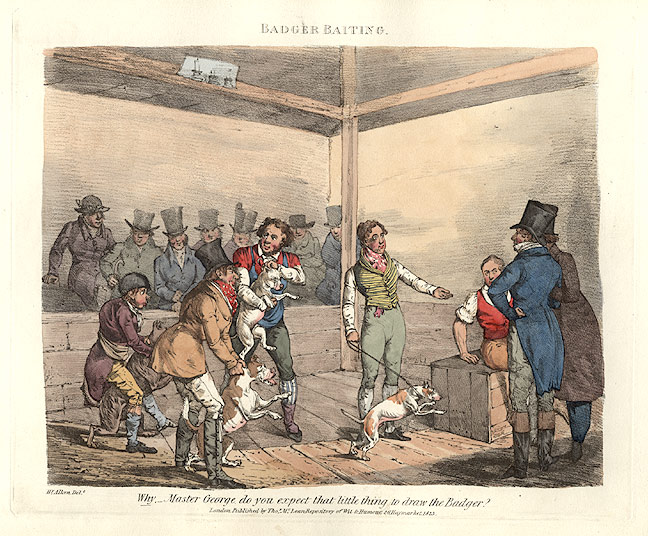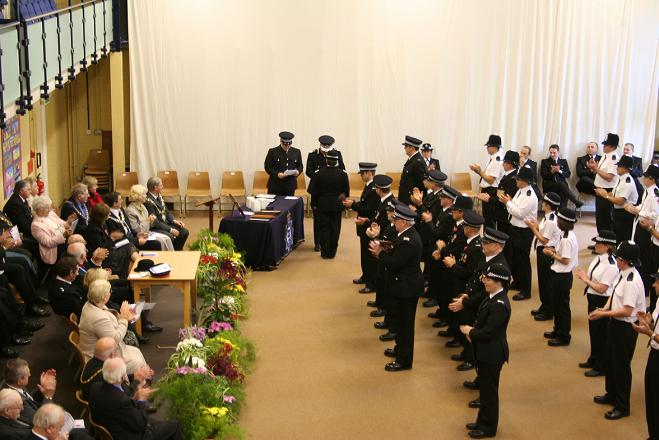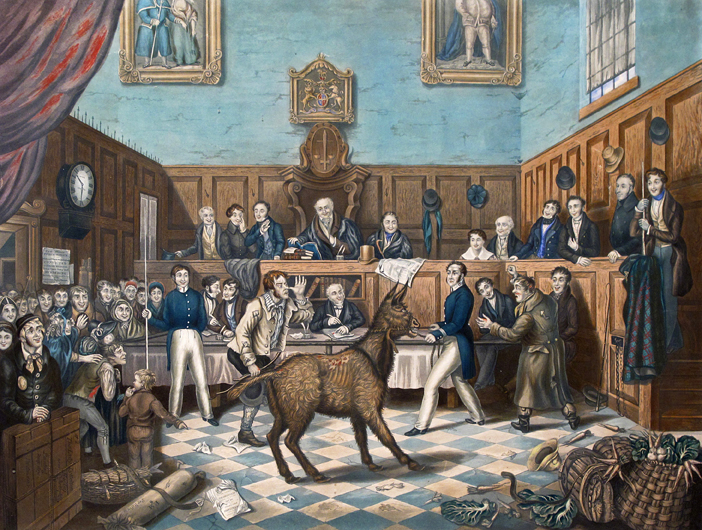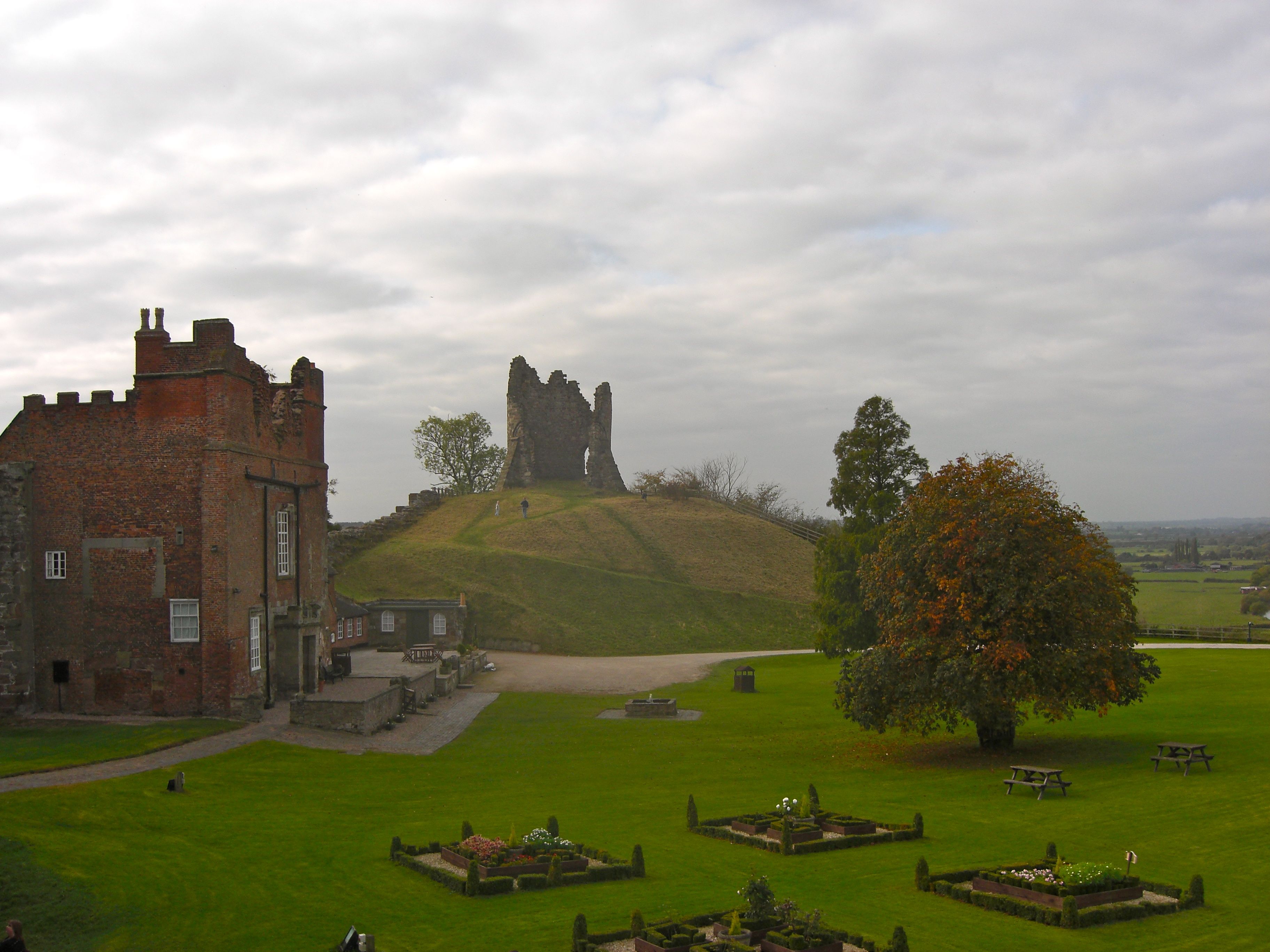|
Stamford Bull Run
The Stamford bull run was a bull-running and bull-baiting event in the English town of Stamford, Lincolnshire. It was held on St Brice's Day (13 November), for perhaps more than 600 years, until 1839. A 1996 ''Journal of Popular Culture'' paper refers to the bull run as a festival, in "the broader context of the medieval if not aboriginal festival calendar", though works written during and shortly after the activity's later years variously describe it as a "riotous custom", a "hunt", an "old-fashioned, manly, English sport", an "ancient amusement", and – towards its end – an "illegal and disgraceful ... proceeding". Attempts to suppress the Stamford bull run began in 1788, the year the Tutbury bull run was brought to an end. Other bull-running events had earlier been held in Axbridge, Canterbury, Wokingham and Wisbech. Origins Folklore in Stamford maintained that the tradition was begun by William de Warenne, 5th Earl of Surrey, during the reign of King John (1199— ... [...More Info...] [...Related Items...] OR: [Wikipedia] [Google] [Baidu] |
Joshua Toulmin Smith
Joshua Toulmin Smith (29 May 1816 – 28 April 1869) was a British political theorist, lawyer and local historian of Birmingham. Born in Birmingham as Joshua Smith, the son of William Hawkes Smith (1786–1840), an economic and educational reformer, radical and Unitarian. He moved to London in 1835 and pursued a career in law, studying at Lincoln's Inn."Smith, Joshua Toulmin" ''Oxford Dictionary of National Biography'' Smith was not called to the bar until 1849, as he interrupted his legal studies to settle between 1837 and 1842 with his new wife Martha in America where he lectured on philosophy and phrenology. Joshua Smith was an incessant writer. In 1839 he gained a diploma of the Royal Society of Antiquaries of Copenhagen for hi ... [...More Info...] [...Related Items...] OR: [Wikipedia] [Google] [Baidu] |
The Folklore Society
The Folklore Society (FLS) is a national association in the United Kingdom for the study of folklore. It was founded in London in 1878 to study traditional vernacular culture, including traditional music, song, dance and drama, narrative, arts and crafts, customs and belief. The foundation was prompted by a suggestion made by Eliza Gutch in the pages of ''Notes and Queries''.Jacqueline Simpson (Editor), Steve Roud (Editor) (2003). ''A Dictionary of English Folklore''. Oxford University Press. The Society is a registered charity under English law. The Folklore Society office is at The Royal Anthropological Institute of Great Britain and Ireland, 50 Fitzroy Street, London. Members William Thoms, the editor of ''Notes and Queries'' who had first introduced the term ''folk-lore'', seems to have been instrumental in the formation of the society and, along with G. L. Gomme, was for many years a leading member. Some prominent members were identified as the "great team" in Richard D ... [...More Info...] [...Related Items...] OR: [Wikipedia] [Google] [Baidu] |
Cruelty To Animals Act 1835
The Cruelty to Animals Act 1835 was an Act of the Parliament of the United Kingdom (5 & 6 Will. 4, c. 59), intended to protect animals, and in particular cattle, from mistreatment. Its long title is An Act to Consolidate and Amend the Several Laws Relating to the Cruel and Improper Treatment of Animals, and the Mischiefs Arising from the Driving of Cattle, and to Make Other Provisions in Regard Thereto. Passage The Act was introduced as a bill by the member of parliament for South Durham, Joseph Pease, who was a Quaker and a member of the committee of the Society for the Prevention of Cruelty to Animals. The law was passed in part due to lobbying by the Society (founded 1824, since 1840 the RSPCA). The Act was repealed and replaced by the Cruelty to Animals Act 1849 12 & 13 Vict. c. 92. Animal baiting The British legal action to protect animals began with the passing of the Cruel Treatment of Cattle Act 1822 to Prevent Cruel and Improper Treatment of Cattle.''The Rights of ... [...More Info...] [...Related Items...] OR: [Wikipedia] [Google] [Baidu] |
Bull Running
Bull running was a custom practised in England until the 19th century. It involved chasing a bull through the streets of a town until it was weakened, then slaughtering the animal and butchering it for its meat. Bull running became illegal in 1835, and the last bull run took place in Stamford, Lincolnshire, in 1839. The practice was not confined to any particular region, with bull runs also documented at Axbridge in the South West England, south west, Canterbury and Wokingham in the South East England, south east, Tutbury in the West Midlands (region), midlands, and Wisbech in the East of England, east. The origins of the custom are uncertain, and the date of observance varied across the country. In Stamford, the bull run took place on Brice of Tours, St Brice's Day (13 November); in Tutbury, it was held on the Assumption of Mary, Feast of the Assumption (15 August); and in Axbridge on Guy Fawkes Day (5 November). Participants may be referred to as bullards, as in the Bullards' Son ... [...More Info...] [...Related Items...] OR: [Wikipedia] [Google] [Baidu] |
Special Constabulary
The Special Constabulary is the part-time volunteer section of statutory police forces in the United Kingdom and some Crown dependencies. Its officers are known as special constables. Every United Kingdom territorial police force has a special constabulary except the Police Service of Northern Ireland, which has a Reserve constituted on different grounds. However, the Royal Ulster Constabulary (and the previous Royal Irish Constabulary) did have its own Ulster Special Constabulary from 1920 until 1970, when the Reserve was formed. The British Transport Police (a national "special police force") also has a special constabulary. In the Crown dependencies, the Isle of Man Constabulary and the States of Guernsey Police Service also have special constabularies, but the States of Jersey Police does not. Jersey has Honorary Police. The strength of the special constabulary as of September 2018 in England and Wales was 11,343, -12.3% on the previous year. The number of special const ... [...More Info...] [...Related Items...] OR: [Wikipedia] [Google] [Baidu] |
Home Secretary
The secretary of state for the Home Department, otherwise known as the home secretary, is a senior minister of the Crown in the Government of the United Kingdom. The home secretary leads the Home Office, and is responsible for all national security, policing and immigration policies of the United Kingdom. As a Great Office of State, the home secretary is one of the most senior and influential ministers in the government. The incumbent is a statutory member of the British Cabinet and National Security Council. The position, which may be known as interior minister in other nations, was created in 1782, though its responsibilities have changed many times. Past office holders have included the prime ministers Lord North, Robert Peel, the Duke of Wellington, Lord Palmerston, Winston Churchill, James Callaghan and Theresa May. In 2007, Jacqui Smith became the first female home secretary. The incumbent home secretary is Suella Braverman. The office holder works alongside the ot ... [...More Info...] [...Related Items...] OR: [Wikipedia] [Google] [Baidu] |
Riot
A riot is a form of civil disorder commonly characterized by a group lashing out in a violent public disturbance against authority, property, or people. Riots typically involve destruction of property, public or private. The property targeted varies depending on the riot and the inclinations of those involved. Targets can include shops, cars, restaurants, state-owned institutions, and religious buildings. Riots often occur in reaction to a grievance or out of dissent. Historically, riots have occurred due to poverty, unemployment, poor living conditions, governmental oppression, taxation or conscription, conflicts between ethnic groups ( race riot) or religions (sectarian violence, pogrom), the outcome of a sporting event (sports riot, football hooliganism) or frustration with legal channels through which to air grievances. While individuals may attempt to lead or control a riot, riots typically consist of disorganized groups that are frequently "chaotic and exhibit herd be ... [...More Info...] [...Related Items...] OR: [Wikipedia] [Google] [Baidu] |
Royal Society For The Prevention Of Cruelty To Animals
The Royal Society for the Prevention of Cruelty to Animals (RSPCA) is a charity operating in England and Wales that promotes animal welfare. The RSPCA is funded primarily by voluntary donations. Founded in 1824, it is the oldest and largest animal welfare organisation in the world and is one of the largest charities in the UK. The organisation also does international outreach work across Europe, Africa and Asia. The charity's work has inspired the creation of similar groups in other jurisdictions, starting with the Ulster Society for the Prevention of Cruelty to Animals (founded in 1836), and including the Scottish Society for Prevention of Cruelty to Animals (1839), the Dublin Society for the Prevention of Cruelty to Animals (1840), the American Society for the Prevention of Cruelty to Animals (1866), the Royal New Zealand Society for the Prevention of Cruelty to Animals (1882), the Singapore Society for the Prevention of Cruelty to Animals (1959) and various groups which eve ... [...More Info...] [...Related Items...] OR: [Wikipedia] [Google] [Baidu] |
William Cavendish, 5th Duke Of Devonshire
William Cavendish, 5th Duke of Devonshire, (14 December 1748 – 29 July 1811), was a British nobleman, aristocrat, and politician. He was the eldest son of William Cavendish, 4th Duke of Devonshire, by his wife, the heiress Lady Charlotte Boyle, ''suo jure'' Baroness Clifford, who brought in considerable money and estates to the Cavendish family. He was invited to join the Cabinet on three occasions, but declined each offer.Michael Durban, 'Cavendish, William, fifth duke of Devonshire (1748–1811)’, Oxford Dictionary of National Biography, Oxford University Press, 200accessed 30 April 2010/ref> He was Lord High Treasurer of Ireland and Governor of Cork, and Lord Lieutenant of Derbyshire. In 1782, he was made a Knight of the Order of the Garter. The 5th Duke is best known for his first wife Georgiana, Duchess of Devonshire. At the age of about twenty, Devonshire toured Italy with William Fitzherbert which is where they commissioned the pair of portraits by Pompeo Batoni. [...More Info...] [...Related Items...] OR: [Wikipedia] [Google] [Baidu] |
Tutbury
Tutbury is a village and civil parishes in England, civil parish in Staffordshire, England. It is north of Burton upon Trent and south of the Peak District. The village has a population of about 3,076 residents. It adjoins Hatton, Derbyshire, Hatton to the north on the Staffordshire–Derbyshire border. History Tutbury is surrounded by the agricultural countryside of both Staffordshire and Derbyshire. The site has been inhabited for over 3,000 years, with Iron Age defensive ditches encircling the main defensive hill, upon which now stand the ruins of the Norman castle. These ditches can be seen most clearly at the Park Pale and at the top of the steep hills behind Park Lane. The name Tutbury probably derives from a Scandinavian settler and subsequent chief of the hill-fort, Totta, ''bury'' being a corruption of ''burh'' the Anglo-Saxon name for 'fortified place'. Tutbury Castle became the headquarters of Henry de Ferrers and was the centre of the wapentake of Appletree, wh ... [...More Info...] [...Related Items...] OR: [Wikipedia] [Google] [Baidu] |








